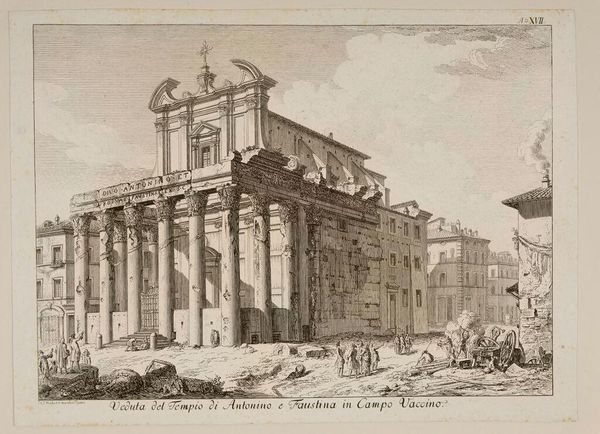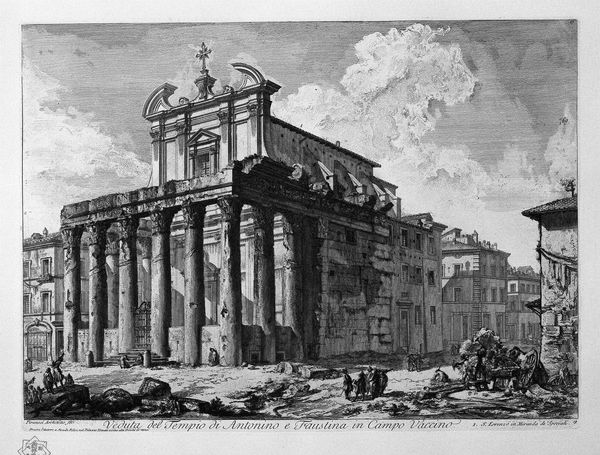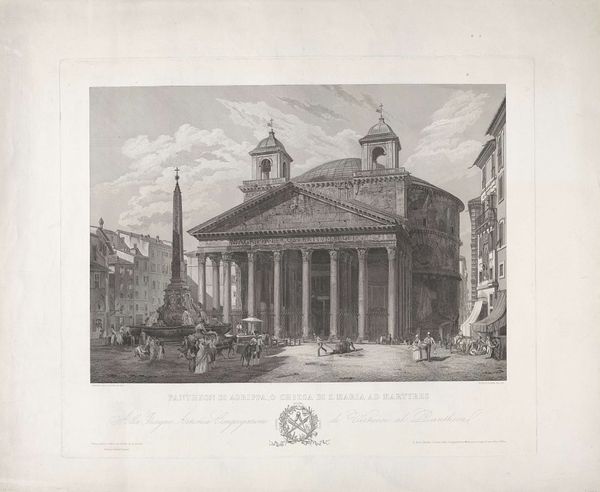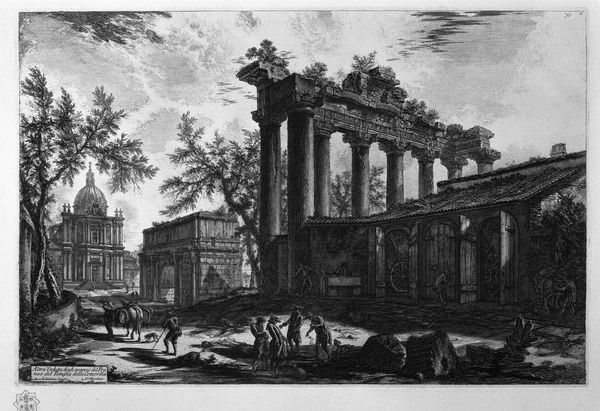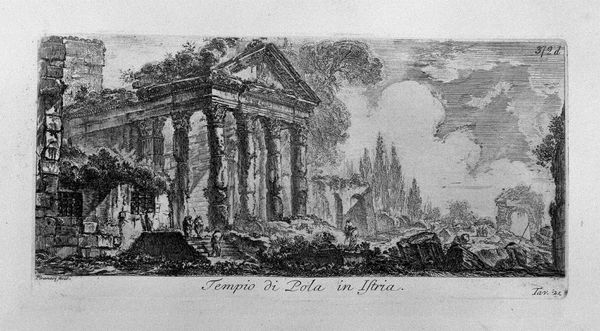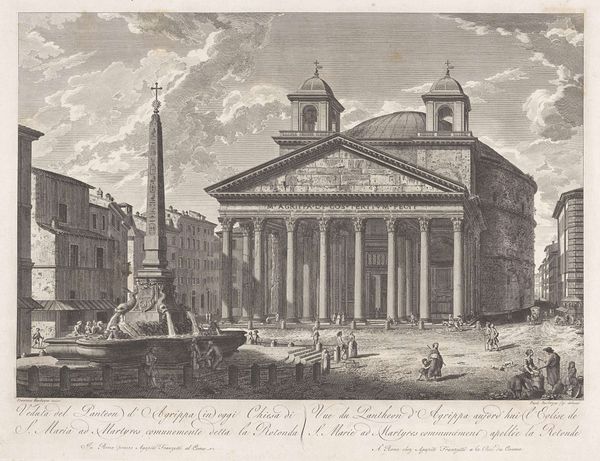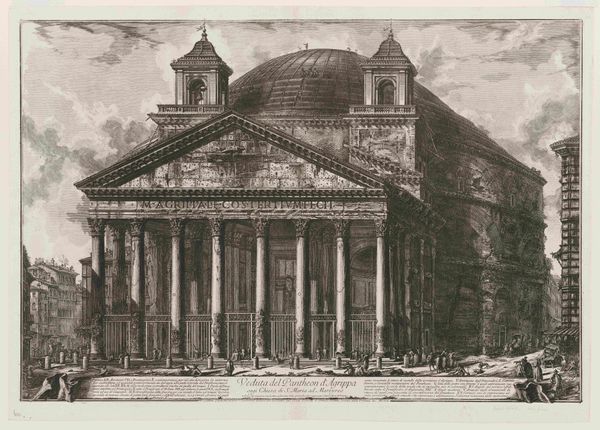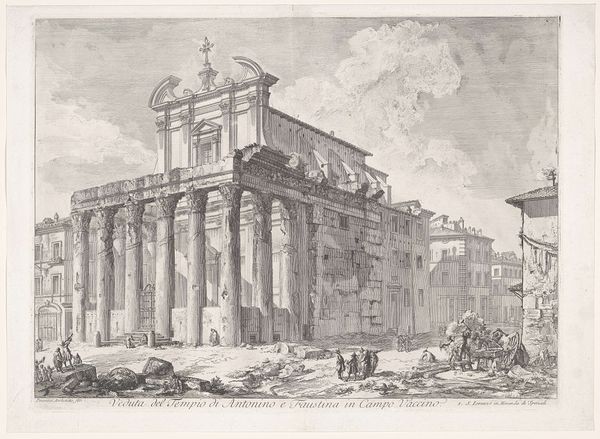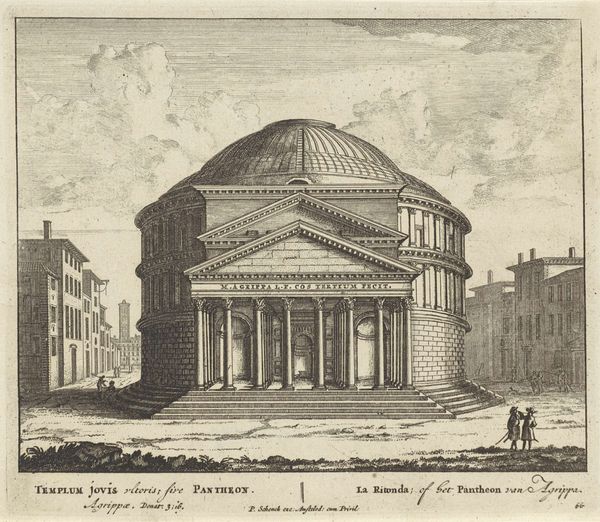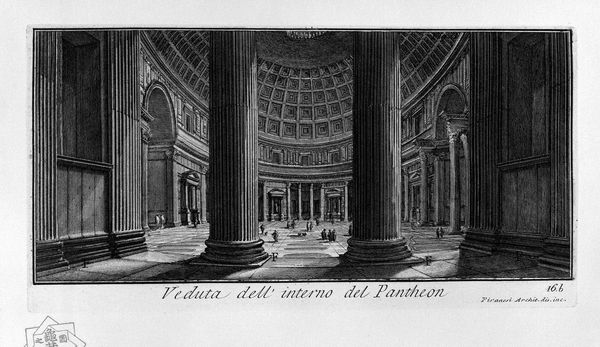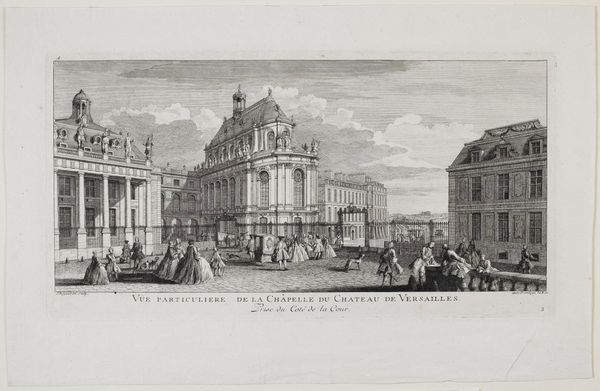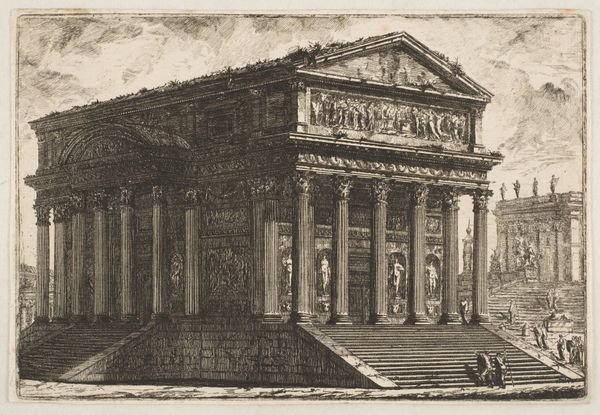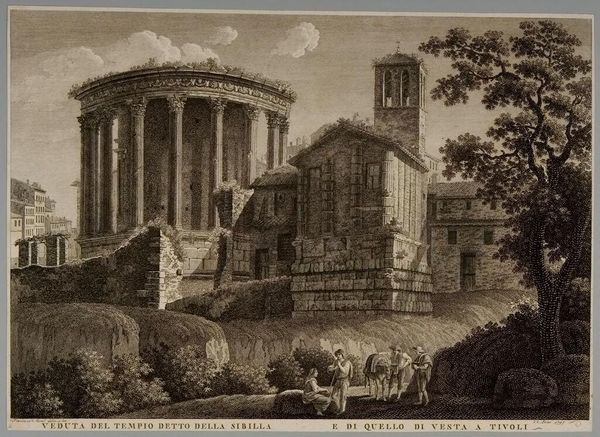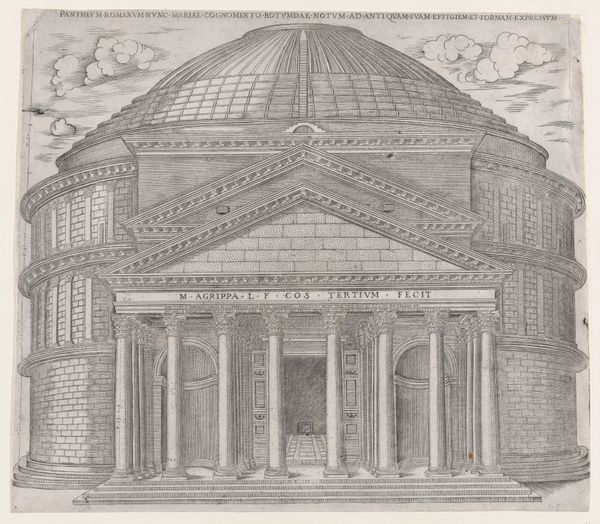
print, etching, engraving, architecture
#
neoclacissism
# print
#
etching
#
landscape
#
line
#
cityscape
#
italian-renaissance
#
engraving
#
architecture
#
realism
Copyright: Public domain
Curator: Up next, we have Giovanni Battista Piranesi's "The Roman Antiquities, t. 1, Plate XIV. Pantheon," an engraving and etching from 1756. The detail is incredible. Editor: Yes, my first impression is the play of light and shadow; it’s almost theatrical. You can almost smell the dust and feel the weight of history here. Curator: Indeed! Piranesi was obsessed with Rome, and it shows. Beyond being a mere record, this etching presents the Pantheon not just as a structure, but almost as a living entity. Look at how the lines give such prominence to the classical forms and celebrate the architectural language with meticulous precision. Editor: And note the almost bustling activity around the base. Are those restorations, repairs, simple daily life mingling with the ghosts of emperors? I see the way those scaffolding elements near the rounded walls on the right interrupt what we would expect of symmetry… Curator: I feel like you’ve really tapped into a deeper layer of Piranesi’s intention here. This isn't just about celebrating Roman grandeur but exploring Rome's lived experience in the 18th century—with ruin adjacent to daily function. He places everyday characters alongside monuments of enduring value. What do you make of the cloudy sky? Editor: Yes, it suggests that timeless themes are ever present. A bit melodramatic for my taste! Piranesi's clouds seem to say, "Even the heavens recognize the weight of Roman history!" Maybe that grandeur is an important reminder for those figures milling about. And perhaps also for us, standing here today? Curator: Maybe! The perspective almost dwarfs the figures which highlights how time can transform even the most powerful symbols. I see a dialogue between aspiration and reality, permanence and impermanence. Editor: Precisely. And looking closely, I appreciate the symbolic charge in those simple lines and sharp contrast: memory itself layered, rebuilt, but forever potent. It’s a complex, emotional statement masquerading as a technical study. Curator: Well, what a great place to leave our audience. Hopefully, Piranesi has gotten under your skin, and we invite you to take a walk among his world! Editor: Agreed! Take his vision home and ask yourselves—what remnants and shadows endure in your own lives and experiences?
Comments
No comments
Be the first to comment and join the conversation on the ultimate creative platform.
